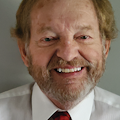Two distinctive yet utterly dissimilar types of days define dentists’ scheduling extremes.
The good day: Several long appointments allow the day to flow smoothly. Working on time consistently, your team shares a sense of accomplishment because providing exceptional care is why everyone enjoys dentistry. Despite being highly productive, the day is not tiring, and everyone is smiling when they go home on time.
The bad and ugly day: Fourteen short appointments and eight hygiene checks have you chasing your tail like a hyperactive pup. At 9 a.m., while doing an occlusal composite on #19, you have trouble with a block, fall 30 minutes behind, and don’t catch up until you reach your (shortened) lunch break. During your first afternoon appointment, a crown doesn’t seat, so you retake an impression and then run behind all afternoon. Patients are angry about waiting, the front office blames the back, and vice versa. You finish the day 45 minutes late, with everyone exhausted and production that doesn’t meet overhead.
What to do about the ugly
I think we can all agree that days like this happen. But to claim they’re an unavoidable part of dentistry is wrong. It’s merely an indication of a poorly managed practice. The solution is block scheduling, which can make each day run smoothly and be highly productive and enjoyable.
For me, this means reserving three 60-minute blocks—two in the morning and one in the afternoon—that we do not break earlier than 48 hours before they occur. There is a lot of pressure on schedulers from patients to fill that time, as those who haven’t been in for six years can’t wait another two weeks for a routine checkup! To keep the times sacrosanct, you must regularly check future scheduled days to ensure you’re maintaining the blocks.
When you find a block that’s broken early, go to whoever scheduled it and ask why. Do not scold; simply sit back and watch them sweat as they mutter an excuse, because they know there is no circumstance where this is allowed. If you don’t check and follow up, blocks will melt away until there is another nightmare day and you mumble in bewilderment, “When did we quit doing blocks?”
How to use blocks
We reserved blocks for molar endo, crown and bridge, dentures, veneers, implants, and generally anything that required an hour or more. We blocked adult new-patient exams separately, reserving two 40-minute slots a week. Your numbers may vary based on demand. While new patients are the lifeblood of every practice, they are also the most likely to fail appointments. So, when someone calls for that long-delayed exam, it’s best to get them in while they’re hot.
We call this manner of scheduling rock, sand, and water. Longer and more productive rocks are appointed first, shorter sand procedures chunked around them, and the day is filled with water such as recalls, denture adjustments, and more.
Block scheduling is merely one example of why dentists must proactively lead their teams. If the doctor doesn’t, staff or patients will. So, commit to this course, enthusiastically enroll your teammates (who hate the bad and ugly days as much as you do), and discover how pleasant and remunerative dentistry can be.
About the Author

John A. Wilde, DDS
After eight years of higher education, paying 100% of the cost himself, John A. Wilde, DDS, spent two years in the Army Dental Corps before beginning a practice from scratch in Keokuk, Iowa. By age 30, he was debt-free, owning outright his new country home and the practice he had designed and built. By 40, he was financially able to retire. At age 53, he fully retired. Dr. Wilde has authored six books and more than 220 articles, and may be reached at (309) 333-2865 or [email protected].
